East Sussex Part 1: Sissinghurst and Monks House
So, I’ve been away for a week staying in Rodmell in East Sussex, walking on the South Downs, drawing and taking heaps of photos, and visiting ‘Bloomsbury’ places. I just got back yesterday.
Since I first read ‘To the Lighthouse’ when I was at college ( about 40 years ago . . . .!) I have admired Virginia Woolf’s writing – her diaries and letters as well as her novels. Virginia and her husband, Leonard Woolf, bought Monks House in the village of Rodmell as a country home where they could spend time away from their London home, a couple of months in the summer, and a few weeks at Easter and Christmas, and odd weekends. Virginia was 37 when they bought it, had published ‘The Voyage Out’, and was working on the proofs of her second novel ‘Night and Day’. Monks House played an important role in her writing, giving her quiet and freedom from constant social pressures – although she often complained that they still had too many visitors! She loved to walk on the downs, and on the water meadows of the Ouse valley, ‘making up’, and talking out loud the next part that she would write, to get the rhythm she wanted into her writing.
And so I decided to go to stay in Rodmell, just a short walk from Monks House, in a small cosy cottage with a lovely view of Mount Caburn, and combine walking some bits of the South Downs Way and doing some drawing for paintings, with visiting some ‘Virginia Woolf’ places. I’m not quite sure why I’ve never done this before!
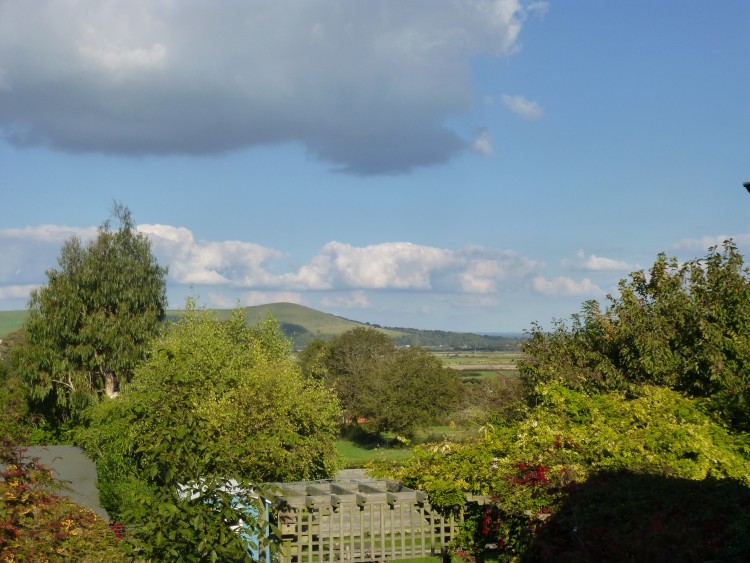
The view from the back of the cottage, with Mount Caburn in the distance, on the other side of the Ouse Valley
On the way down to Rodmell I stopped at Sissinghurst Castle, the former home of Virginia’s friend, Vita Sackville West, also an author. ‘All Passion Spent’ is my favourite of her novels, but her long poems, ‘The Land’ and ‘The Garden’ are well worth a read, although it’s hard to track down copies these days.
The justly-famous garden that Vita and her husband Harold Nicolson made was looking really beautiful, even at this quite late time of the year.
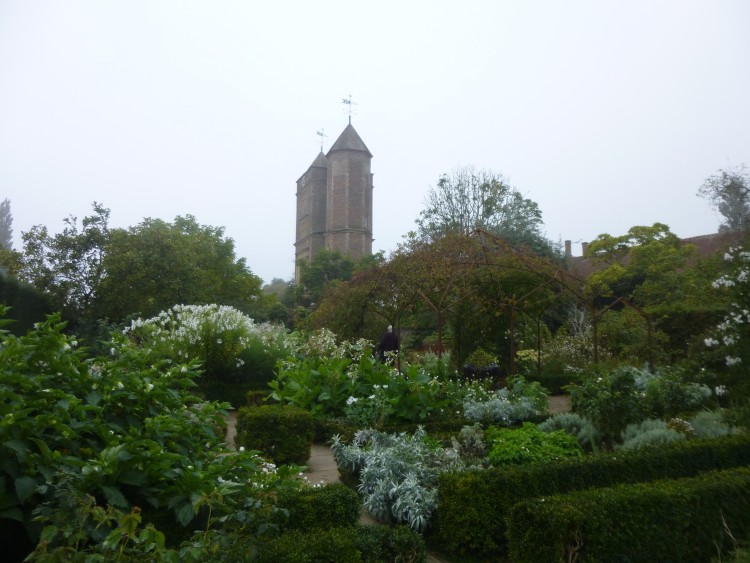
The Elizabethan tower at Sissinghurst from the ‘White Garden’
I climbed the tower, of course, and the view from the top was definitely worth it, but I also liked the use of some of the otherwise empty rooms on the way up: in one of them, Vita’s poem ‘Sissinghurst’ was written around the walls, accompanied by a recording of Vita herself reading it – the recording started to play as you entered the room.
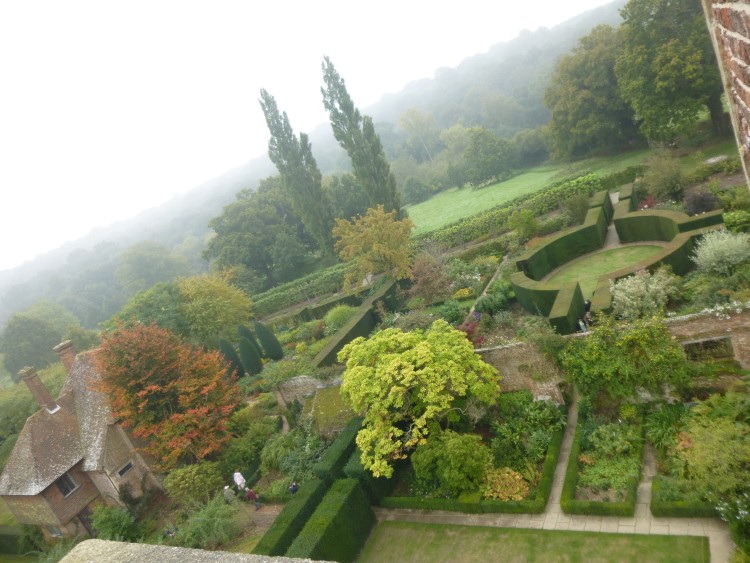
Looking down onto part of the garden from the tower
After the grandeur of Sissinghurst, visiting Monks House, the following day, couldn’t have been more of a contrast! It is a long, low 17th century cottage, with weatherboarding along the front, and when the Woolfs first moved here it was pretty primitive and uncomfortable. But there was a huge garden which they both loved, and in which Virginia’s writing lodge was built, where she could write in peace when the weather was warm enough.
The first room that you enter is ‘our large combined drawing eating room, with its 5 windows, its beams down the middle, and flowers & leaves nodding in all round us.’ Virginia writes in her diary about the partition being taken down to change two small rooms into this big one, and about she, herself, painting the walls green.
It was amazing to think of some of the visitors who have sat over the fire in this room talking – T. S. Eliot, E. M.Forster, Lytton Strachey, John Maynard Keynes, Roger Fry – and most visitors complained bitterly about the cold and the lack of comfort! But gradually over the years, as her novels became increasingly successful, they were able to make improvements, and build an extension. She writes in her diary that the world gave her the new extension for having written her novels, which is rather a lovely way of looking at it!
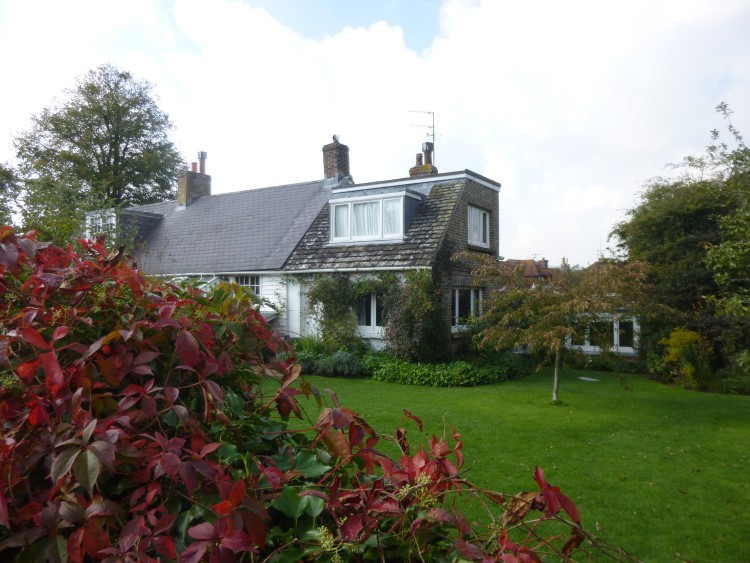
The extension that the Woolfs added to the end of Monks House
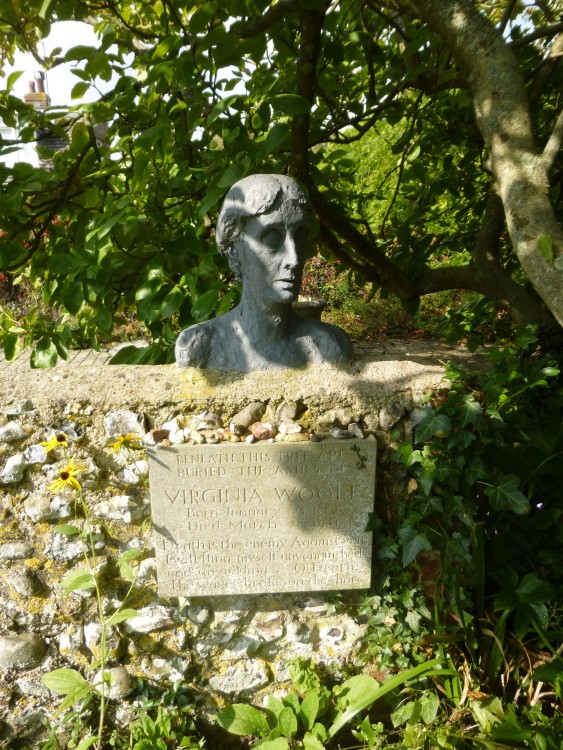
Virginia Woolf modelled by Stephen Tomlin, in the Monks House garden
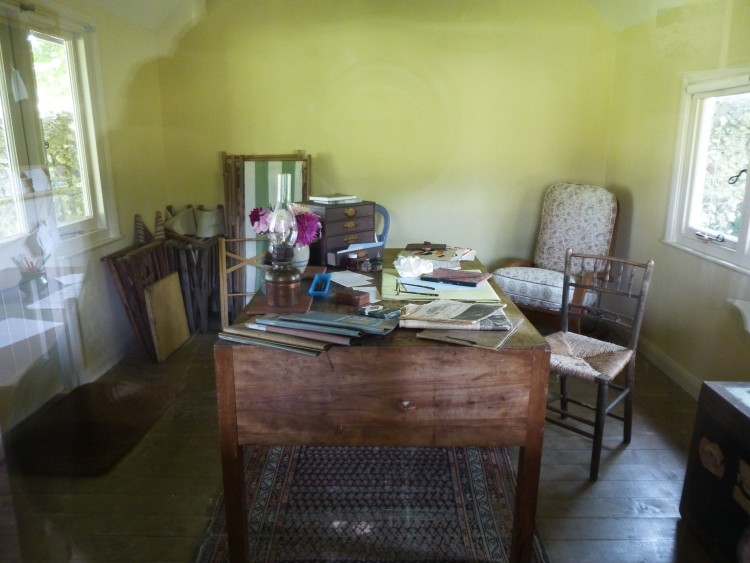
The interior of Virginia Woolf’s writing lodge
(This last is not a very good photo as it was taken through glass.)
The writing lodge is right at the top of the garden, through the orchard, where apple, quince and medlar trees were heavy with fruit. It has a view across the Ouse Valley to Mount Caburn. Outside it is the large lawn where the Woolfs used to play bowls with their visitors – Virginia was a particularly energetic and competitive player, apparently! The box of wooden bowls is still by the back door . . . .
Part 2 tomorrow – Walking the Downs
Hope you’ve had a good weekend 🙂
